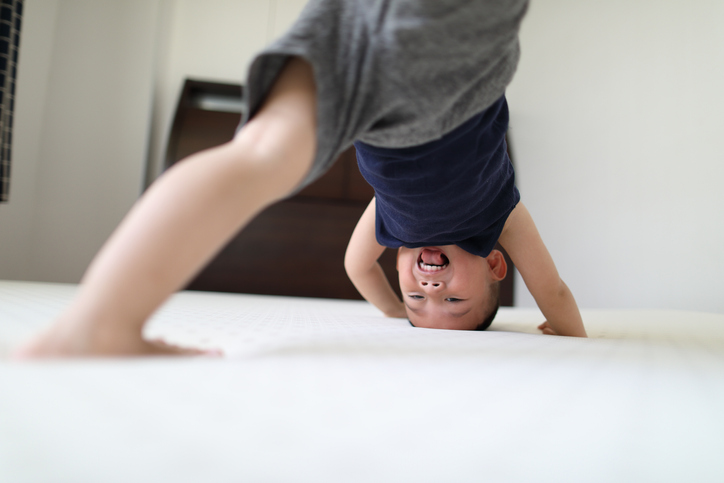
Could your kids power the electrical grid, if you could only figure out how to tap that energy? Someday, all the hours spent cooped up at home will be a memory, not a daily reality. But if your children are bouncing off the walls with schools and day care still closed and summer coming, here are five active ideas to safely channel their energy. Pandemic or not, preschoolers benefit from active play throughout the day, and children ages 6 to 17 should rack up at least 60 minutes of activity daily, according to the Centers for Disease Control and Prevention. And since regular activity boosts health and lifts mood, everyone stands to benefit.
Pick a card
Annelieke Rietsema, an employee health coach and fitness specialist at Newton-Wellesley Hospital, suggests this simple strategy. Take a pack of playing cards and assign different exercises to each suit. For example, hearts could be jumping jacks or bear crawl; diamonds could be burpees or somersaults (if you have room); spades could be mountain climbers or cat-cow; clubs could be knee pushups or squats. Now shuffle or mix up the cards (face down), then start going through the deck. Kids do the number of each exercise on cards numbered 2 to 9. They do 10 of an exercise if a card is an ace, jack, queen, or king. So, a jack of hearts in the spades suit could equal 10 mountain climbers. For an exercise without discrete repetitive movements, like the bear crawl, try assigning a number of seconds based on the card selected (a five of hearts equals five seconds of bear crawl).
Children can do the shuffling and assign exercise choices, even picking simpler or harder exercises depending on age or ability.
Top of the hour
Five-minute or 10-minute energy burns at the top of each hour may help keep the peace. Have kids set a timer and choose easy exercises: running in place, jumping jacks, skipping rope, practicing sit-ups and squats. Children can compete with each other or with friends — from one week to the next, is it getting easier to do certain exercises? Can you do more than you could before?
Creature moves
Challenge younger children to think up and enact the moves of animals and other creatures: waddle like a duck, small hops like a bunny, giant hops like a kangaroo, slither like a snake, jump high like a frog, crawl-walk like a bear, inch forward like a turtle, waggle-dance like a honeybee, flap arms like a bird, crawl sideways like a crab, and so on. Set up indoor races for the quieter moves (crab, duck, snake) and occasional outdoor races for louder critters, to see who reaches the finish line in the least and most time. Extra points for unusual choices.
Personal best
Record how long a child can hop or balance on one foot or the number of push-ups, sit-ups, jumping jacks, or other exercises a child can do in a row. Practice three times a week and track the results once weekly.
Teens and some younger children may enjoy setting goals and logging progress in virtual races. The Healthy Kids Virtual Running Series for children in pre-K to grade 8 has a state-by-state locator to find local races. Many charities are encouraging people of all ages to raise money while walking, running, biking — or even dancing — in virtual events.
Yoga and fitness classes online
Two engaging options are Cosmic Kids, which combines yoga and storytelling into a calming, enjoyable workout for many children, and Go Noodle, which has high-energy video or app games to get kids moving and silly costumes to amuse them. Or you can find free online options, or sample classes available through local gyms, recreation centers, or YMCAs. Be sure to screen fitness videos aimed at children, to check if they are appropriate for your child.
Whatever you choose to help children burn energy, do give a thought to your neighbors. Quieter exercises are best if you live above someone, and mixing in safe outdoor time is good for everyone, parents included. If there’s enough room to move freely while maintaining safe distances, a game of tag or soccer, a bike ride, or just a run, skip, or kangaroo-hop to the end of each block could be fun.
